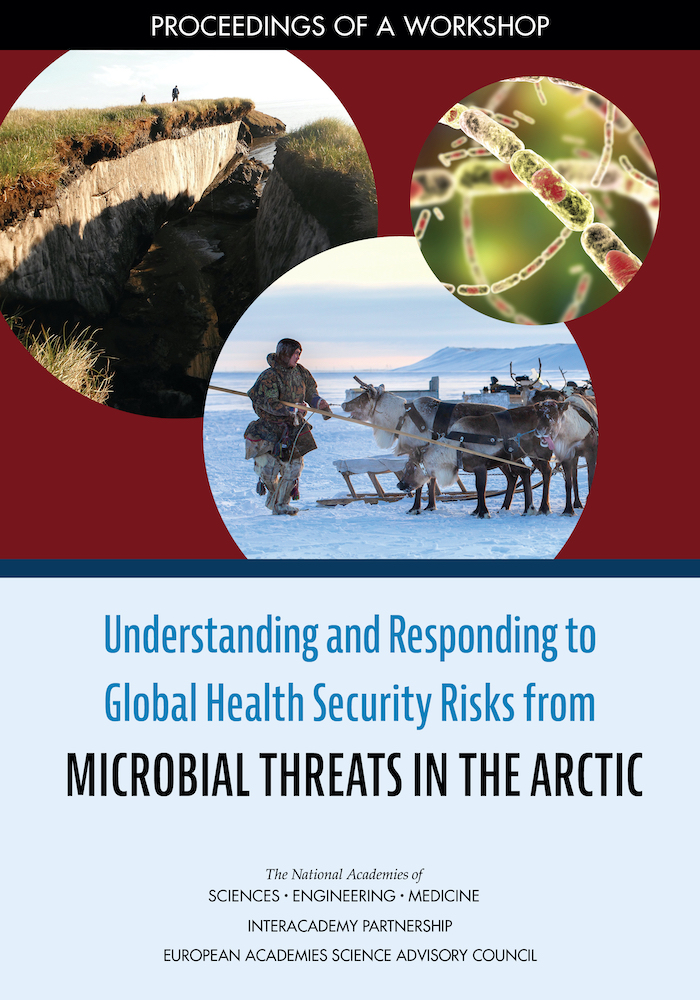By: The National Academies Staff
A rapidly warming climate is leading to widespread thawing of permafrost and ice across Arctic and sub-Arctic regions. Among the many concerns this raises are growing questions about bacteria and viruses that could possibly emerge from these thawing environments, raising infectious microbial risks for animal and human populations. Studies have shown that bacteria and viruses frozen in the environment can remain viable for thousands and even millions of years; and this raises questions about whether permafrost may harbor microbes that are human pathogens, and for which modern immune systems have no protection. Given the very limited studies to date, it is difficult to characterize the magnitude and nature of these potential risks; yet understanding and preparing for "low-probability, high-consequence" events is one of the hallmarks of a robust public health protection strategy. The National Academies of Sciences, Engineering, and Medicine (NASEM) in collaboration with the InterAcademy Partnership (IAP) and the European Academies Science Advisory Committee (EASAC) held a workshop in November 2019 that brought together researchers and public health officials from several countries and across many relevant disciplines to explore what is known—and what critical knowledge gaps remain—regarding existing and possible future risks of harmful infectious agents emerging from thawing permafrost and melting ice in the Arctic region.

The NASEM Polar Research Board (PRB) conducted and provided institutional oversight for this project together with the Board on Life Sciences (BLS) and the Board on Global Health (BGH). The workshop included a wide range of experts and stakeholders from 15 countries, including representatives from Indigenous Arctic communities. The workshop examined case studies such as the specific case of Arctic region anthrax outbreaks, as a known, observed risk as well as other types of human and animal microbial health risks that have been discovered in snow, ice, or permafrost environments, or that could conceivably exist. The workshop primarily addressed two sources of emerging infectious diseases in the Arctic: (1) new diseases likely to emerge in the Arctic as a result of climate change (such as vector-borne diseases), and (2) ancient and endemic diseases likely to emerge in the Arctic specifically as a result of permafrost thaw. Participants also considered key research that could advance knowledge, including critical tools for improving observations, surveillance to advance understanding of these risks, and to facilitate and implement effective early warning systems. Lessons learned from efforts to address emerging or re-emerging microbial threats elsewhere in the world were also discussed.
Published in September 2020, a detailed workshop summary outlines presentations and discussions of the workshop. Recordings of talks and presentation files are also available on the PRB website. In addition, IAP and EASAC released a workshop booklet that highlights their perspectives on Arctic warming and microbial threats. Sponsors of the NASEM activity include the US Agency for International Development Emerging Pandemic Threats Program, the US Centers for Disease Control and Prevention National Center for Emerging and Zoonotic Infectious Diseases, the Tides Center Ending Pandemics Project, the Heising-Simons Foundation, the Gordon and Betty Moore Foundation, the National Academies endowment funds.
For further information, please see:
